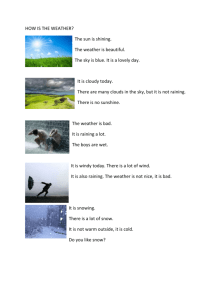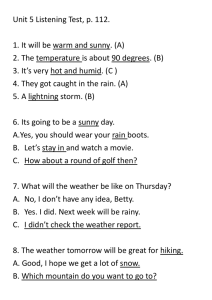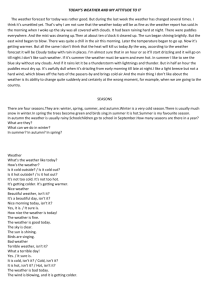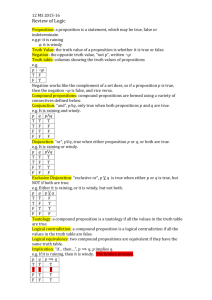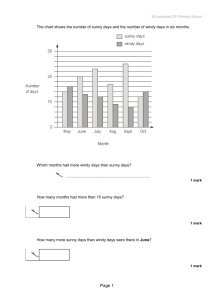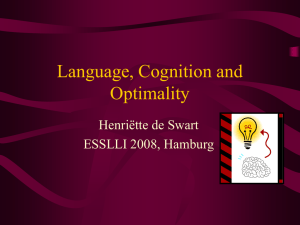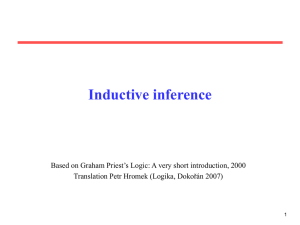solutions
advertisement
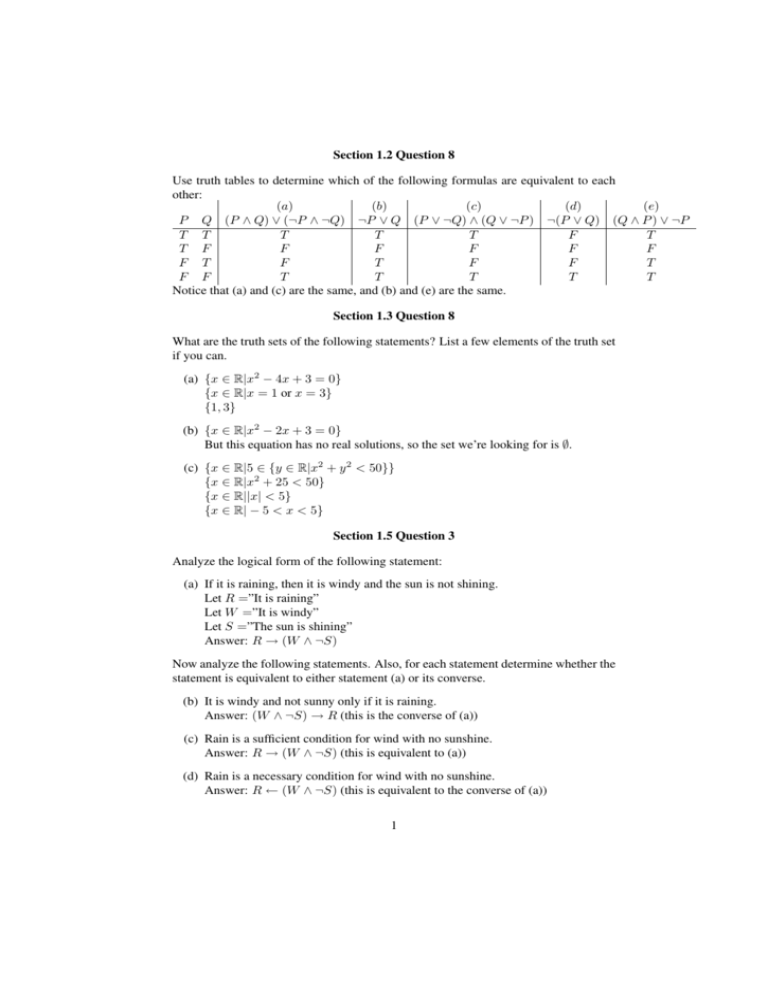
Section 1.2 Question 8
Use truth tables to determine which of the following formulas are equivalent to each
other:
(a)
(b)
(c)
(d)
(e)
P Q (P ∧ Q) ∨ (¬P ∧ ¬Q) ¬P ∨ Q (P ∨ ¬Q) ∧ (Q ∨ ¬P ) ¬(P ∨ Q) (Q ∧ P ) ∨ ¬P
T T
T
T
T
F
T
T F
F
F
F
F
F
F
T
F
F
T
F T
F F
T
T
T
T
T
Notice that (a) and (c) are the same, and (b) and (e) are the same.
Section 1.3 Question 8
What are the truth sets of the following statements? List a few elements of the truth set
if you can.
(a) {x ∈ R|x2 − 4x + 3 = 0}
{x ∈ R|x = 1 or x = 3}
{1, 3}
(b) {x ∈ R|x2 − 2x + 3 = 0}
But this equation has no real solutions, so the set we’re looking for is ∅.
(c) {x ∈ R|5 ∈ {y ∈ R|x2 + y 2 < 50}}
{x ∈ R|x2 + 25 < 50}
{x ∈ R||x| < 5}
{x ∈ R| − 5 < x < 5}
Section 1.5 Question 3
Analyze the logical form of the following statement:
(a) If it is raining, then it is windy and the sun is not shining.
Let R =”It is raining”
Let W =”It is windy”
Let S =”The sun is shining”
Answer: R → (W ∧ ¬S)
Now analyze the following statements. Also, for each statement determine whether the
statement is equivalent to either statement (a) or its converse.
(b) It is windy and not sunny only if it is raining.
Answer: (W ∧ ¬S) → R (this is the converse of (a))
(c) Rain is a sufficient condition for wind with no sunshine.
Answer: R → (W ∧ ¬S) (this is equivalent to (a))
(d) Rain is a necessary condition for wind with no sunshine.
Answer: R ← (W ∧ ¬S) (this is equivalent to the converse of (a))
1
(e) It’s not raining, if either the sun is shining or it’s not windy.
Answer: ¬R ← (S ∨ ¬W ) (this is equivalent to (a))
(f) Wind is a necessary condition for it to be rainy, and so is a lack of sunshine.
Answer: (W ← R) ∧ (¬S ← R) (this is equivalent to (a))
(g) Either it is windy only if it is raining or it is not sunny only if it is raining.
Answer: (W → R) ∨ (¬S → R) (this is equivalent to the converse of (a))
2
